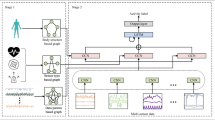Abstract
Machine Learning (ML) has been applied to enable many life-assisting applications, such as abnormality detection in daily routines and automatic emergency request for the solitary elderly. However, in most cases ML algorithms depend on the layout of the target Internet of Things (IoT) sensor network. Hence, to deploy an application across Heterogeneous Sensor Networks (HSNs), i.e. sensor networks with different sensors type or layouts, it is required to repeat the process of data collection and ML algorithm training. In this paper, we introduce a novel framework leveraging deep learning for graphs to enable using the same activity recognition system across HSNs deployed in different smart homes. Using our framework, we were able to transfer activity classifiers trained with activity labels on a source HSN to a target HSN, reaching about 75% of the baseline accuracy on the target HSN without using target activity labels. Moreover, our model can quickly adapt to unseen sensor layouts, which makes it highly suitable for the gradual deployment of real-world ML-based applications. In addition, we show that our framework is resilient to suboptimal graph representations of HSNs.
Access this chapter
Tax calculation will be finalised at checkout
Purchases are for personal use only
Similar content being viewed by others
References
Suryadevara, N.K., Mukhopadhyay, S.C., Wang, R., Rayudu, R.K.: Forecasting the behavior of an elderly using wireless sensors data in a smart home. Eng. Appl. Artif. Intell. 26, 2641–2652 (2013). https://doi.org/10.1016/J.ENGAPPAI.2013.08.004
Orpwood, R., Adlam, T., Evans, N., Chadd, J., Self, D.: Evaluation of an assisted-living smart home for someone with dementia. J. Assist. Technol. 2, 13–21 (2008)
Lotfi, A., Langensiepen, C., Mahmoud, S.M., Akhlaghinia, M.J.: Smart homes for the elderly dementia sufferers: Identification and prediction of abnormal behaviour. J. Ambient Intell. Humaniz. Comput. 3, 205–218 (2012). https://doi.org/10.1007/s12652-010-0043-x
Barth, J., et al.: Biometric and mobile gait analysis for early diagnosis and therapy monitoring in Parkinson’s disease. In: 2011 Annual International Conference of the IEEE Engineering in Medicine and Biology Society. pp. 868–871. IEEE (2011)
Chiang, Y., Lu, C.-H., Hsu, J.Y.-J.: A feature-based knowledge transfer framework for cross-environment activity recognition toward smart home applications. IEEE Trans. Hum. Mach. Syst. 47, 310–322 (2017). https://doi.org/10.1109/THMS.2016.2641679
Cook, D.J., Crandall, A.S., Thomas, B.L., Krishnan, N.C.: CASAS: a smart home in a box. Comput. (Long. Beach. Calif). 46, 62–69 (2013). https://doi.org/10.1109/mc.2012.328
Kipf, T.N., Welling, M.: Semi-supervised classification with graph convolutional networks. arXiv Prepr. arXiv1609.02907. (2016)
Ying, R., You, J., Morris, C., Ren, X., Hamilton, W.L., Leskovec, J.: Hierarchical graph representation learning with differentiable pooling. In: Advances in Neural Information Processing Systems, pp. 4800–4810 (2018)
Haeusser, P., Frerix, T., Mordvintsev, A., Cremers, D.: Associative domain adaptation. In: Proceedings of IEEE International Conference of Computer Vision, October 2017, pp. 2784–2792 (2017). https://doi.org/10.1109/iccv.2017.301
Hu, D.H., Yang, Q.: Transfer learning for activity recognition via sensor mapping. In: IJCAI International Joint Conference on Artificial Intelligence, pp. 1962–1967 (2011)
Feuz, K.D., Cook, D.J.: Heterogeneous transfer learning for activity recognition using heuristic search techniques (2014)
Zhou, G., He, T., Wu, W., Hu, X.T.: Linking heterogeneous input features with pivots for domain adaptation. In: Twenty-Fourth International Joint Conference on Artificial Intelligence, pp. 1419–1425 (2015)
Zhou, J.T., Tsang, I.W., Pan, S.J., Tan, M.: Heterogeneous Domain Adaptation for Multiple Classes (2014)
Sukhija, S., Krishnan, N.C., Singh, G.: Supervised Heterogeneous Domain Adaptation via Random Forests. In: International Joint Conferences on Artificial Intelligence. pp. 2039–2045 (2016)
Shi, X., Liu, Q., Fan, W., Yu, P.S., Zhu, R.: Transfer learning on heterogenous feature spaces via spectral transformation. In: Proceedings of IEEE International Conference of Data Mining, ICDM, pp. 1049–1054 (2010). https://doi.org/10.1109/icdm.2010.65
Wang, C., Mahadevan, S.: Manifold alignment without correspondence (2009)
Zhuang, F., Cheng, X., Luo, P., Pan, S.J., He, Q.: Supervised representation learning: transfer learning with deep autoencoders. In: IJCAI International Joint Conference on Artificial Intelligence, pp. 4119–4125 (2015)
Wang, X., Ma, Y., Cheng, Y., Zou, L., Rodrigues, J.J.P.C.: Heterogeneous domain adaptation network based on autoencoder. J. Parallel Distrib. Comput. 117, 281–291 (2018). https://doi.org/10.1016/j.jpdc.2017.06.003
Kipf, T.N., Welling, M.: Variational Graph Auto-Encoders (2016)
Wang, C., Pan, S., Long, G., Zhu, X., Jiang, J.: MGAE: marginalized graph autoencoder for graph clustering. https://doi.org/10.1145/3132847.3132967
Kingma, D.P., Ba, J.: Adam: a method for stochastic optimization (2014)
Schlichtkrull, M., Kipf, T.N., Amsterdam pbloem, V., Rianne van den Berg, vunl, Titov, I., Welling, M.: Modeling Relational Data with Graph Convolutional Networks Peter Bloem. In: European Semantic Web Conference. pp. 593–607 (2017)
Acknowledgment
The project reported in this paper is sponsored by Ministry of Science and Technology (MOST) of Taiwan Government under Project Number MOST 107-2218-E-009-020 -
Author information
Authors and Affiliations
Corresponding author
Editor information
Editors and Affiliations
Rights and permissions
Copyright information
© 2019 Springer Nature Switzerland AG
About this paper
Cite this paper
Medrano, J., Lin, F.J. (2019). Enabling Machine Learning Across Heterogeneous Sensor Networks with Graph Autoencoders. In: Chatzigiannakis, I., De Ruyter, B., Mavrommati, I. (eds) Ambient Intelligence. AmI 2019. Lecture Notes in Computer Science(), vol 11912. Springer, Cham. https://doi.org/10.1007/978-3-030-34255-5_11
Download citation
DOI: https://doi.org/10.1007/978-3-030-34255-5_11
Published:
Publisher Name: Springer, Cham
Print ISBN: 978-3-030-34254-8
Online ISBN: 978-3-030-34255-5
eBook Packages: Computer ScienceComputer Science (R0)





